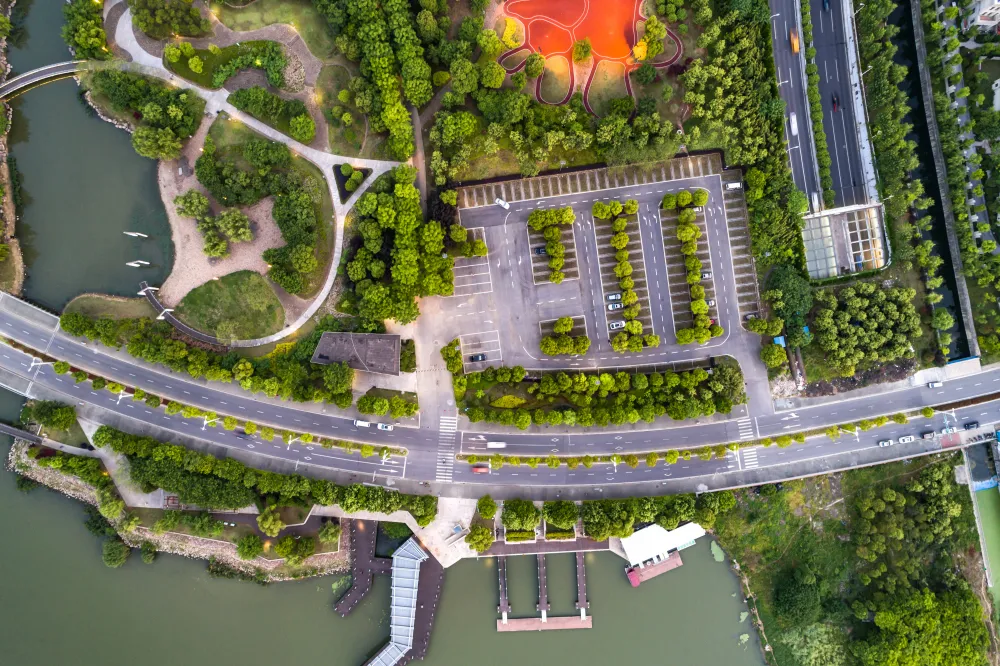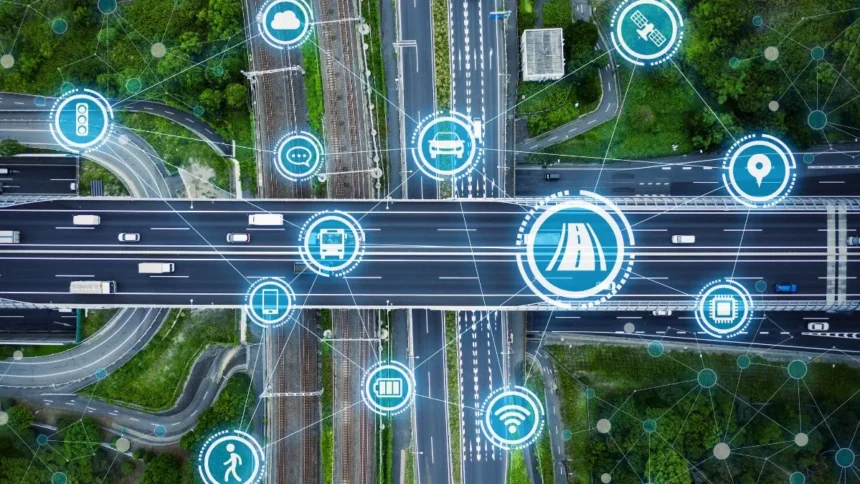We do not inherit the Earth from our ancestors; we borrow it from our children.” – Native American Proverb
Introduction
Climate change is no longer a distant threat but a present reality, particularly for coastal cities in the U.S. Over the last few decades, rising sea levels, stronger storms, and flooding have intensified, causing significant damage to infrastructure, homes, and local ecosystems. How are these cities adapting? The answer lies in tackling climate change with green infrastructure integrating nature with urban planning to create sustainable and resilient cities.
Did you know? According to NOAA, sea levels along U.S. coasts have risen by about 9 inches since the 1880s, with projections indicating further acceleration. This poses a serious risk to the nearly 40% of Americans who live in coastal areas.
This article explores how U.S. coastal cities use green infrastructure to tackle climate change by implementing solutions like porous pavements, urban forests, and wetland restoration. We will also examine residents’ vital role in these efforts and how their participation helps these cities become more sustainable.
The Impact of Climate Change on U.S. Coastal Cities
Climate change solutions for U.S. coastal cities are becoming top priorities as these areas face increasingly severe consequences. Here are some of the key issues coastal cities are encountering:
- Rising Sea Levels: Increased water levels threaten infrastructure, displacing communities and causing costly property damage.
- Coastal Erosion: The gradual loss of land affects homes, businesses, and local wildlife habitats.
- Flooding and Storm Surges: Cities like Miami and New Orleans experience frequent flooding, with storm surges becoming more intense due to warming oceans.
- Increased Storm Intensity: Hurricanes are becoming more frequent and severe, leaving behind a trail of destruction.
Also Read: Rising Sea Levels – The Alarming Threat Impacting Our Coastal Cities
The rising risks make it clear that action is needed. Coastal cities are turning to green infrastructure to manage these threats, a shift toward sustainability that provides long-term benefits.
How U.S. Coastal Cities Are Investing in Green Infrastructure
In response to the growing challenges, cities across the U.S. are adopting green infrastructure installation in U.S. coastal cities to mitigate the impacts of climate change. Below are key initiatives being used to create a more sustainable future:
Also Read: U.S. Coastal Cities Face Economic Ruin from Climate Change
Porous Pavements
Porous pavements, also known as permeable pavements, allow water to seep through the surface into the ground below, helping manage stormwater. This is particularly important in cities prone to flooding.
- Miami has invested in installing porous pavements in flood-prone neighborhoods, which has reduced water runoff and minimized damage during heavy rains.
- Seattle has incorporated permeable walkways and parking lots, reducing pressure on stormwater systems.
By tackling climate change with green infrastructure like porous pavements, cities can prevent water from overwhelming drainage systems, protecting streets and buildings from damage.
Urban Forests
Urban forests provide a dual benefit. They absorb carbon dioxide and mitigate the heat island effect in cities, lowering temperatures and providing shade.
- New York City’s ambitious goal is to plant one million trees, improving air quality and reducing heat during the summer months.
- Los Angeles is planting urban forests along streets to reduce carbon, filter stormwater, and support biodiversity.
These urban forests help coastal cities become greener and more resilient, making them a key part of climate change solutions for U.S. coastal cities.
Wetland Restoration
Wetlands act as natural buffers, absorbing excess water during floods and acting as carbon sinks by storing carbon dioxide. Wetland restoration has proven to be a vital element of green infrastructure installation in U.S. coastal cities.
- New Orleans is restoring wetlands along the Louisiana coast to protect against storm surges, a project vital to the city’s survival.
- San Francisco is working on restoring the wetlands around the Bay Area to combat rising sea levels and support local wildlife.
These restoration projects highlight how tackling climate change with green infrastructure can help protect coastal areas while promoting biodiversity.

The Role of Local Communities in Green Infrastructure Efforts
While city governments play a critical role in implementing green infrastructure to tackle climate change, the residents of coastal cities are just as important in driving success. Here’s how local communities contribute:
- Advocacy and Participation: Residents actively participate in public meetings and advocate for green projects like urban gardens, tree planting initiatives, and community-supported clean-up days.
- Sustainable Living Practices: Simple changes like reducing water usage, recycling, and installing rain barrels help relieve the pressure on city infrastructure.
- Volunteerism and Education: Programs that engage residents, such as workshops on sustainable gardening or volunteer wetland restoration days, empower locals to take part in tackling climate change with green infrastructure.
These combined efforts between the government and citizens ensure that climate change solutions for U.S. coastal cities are sustainable and effective in the long term.
Benefits of Green Infrastructure in U.S. Coastal Cities
The implementation of green infrastructure installation in U.S. coastal cities brings several significant advantages, including:
- Flood Reduction: By using permeable surfaces and restoring wetlands, cities can drastically reduce the impact of floods.
- Cost-Effective Solutions: Green infrastructure is often more affordable than building traditional “grey infrastructure” like levees and dams.
- Improved Public Health: Urban forests and green spaces provide cleaner air and reduce the urban heat island effect, improving overall quality of life.
- Biodiversity Conservation: Wetland restoration and green spaces help maintain biodiversity, offering habitats for various species crucial to the ecosystem.
Key Takeaway
Tackling climate change with green infrastructure is not just an innovative solution—it is essential for protecting U.S. coastal cities from increasingly severe impacts. By investing in projects like porous pavements, urban forests, and wetland restoration, cities are building a more sustainable future for people and the planet.
Conclusion
In the fight against climate change, coastal cities in the U.S. are leading the way by investing in green infrastructure installation in U.S. coastal cities. From porous pavements to urban forests and wetland restoration, these cities are addressing the immediate risks and creating more livable and sustainable environments for future generations. As we continue to face the challenges of climate change, governments, residents, and businesses need to collaborate and adopt green infrastructure to tackle climate change on a broader scale.
What is green infrastructure?
Green infrastructure uses natural solutions, such as porous pavements, urban forests, and wetlands, to solve environmental challenges like flooding and climate change.
Why is green infrastructure important for U.S. coastal cities?
As coastal cities face increased flooding, sea level rise, and storm surges due to climate change, green infrastructure offers a sustainable way to mitigate these risks and protect local communities.
How can residents contribute to green infrastructure initiatives?
Residents can support green infrastructure to tackle climate change by participating in local projects, advocating for sustainable policies, and adopting eco-friendly practices in their daily lives.
What are the long-term benefits of green infrastructure?
Green infrastructure provides lasting benefits, such as reducing flood risks, improving air quality, conserving biodiversity, and creating healthier urban environments.





